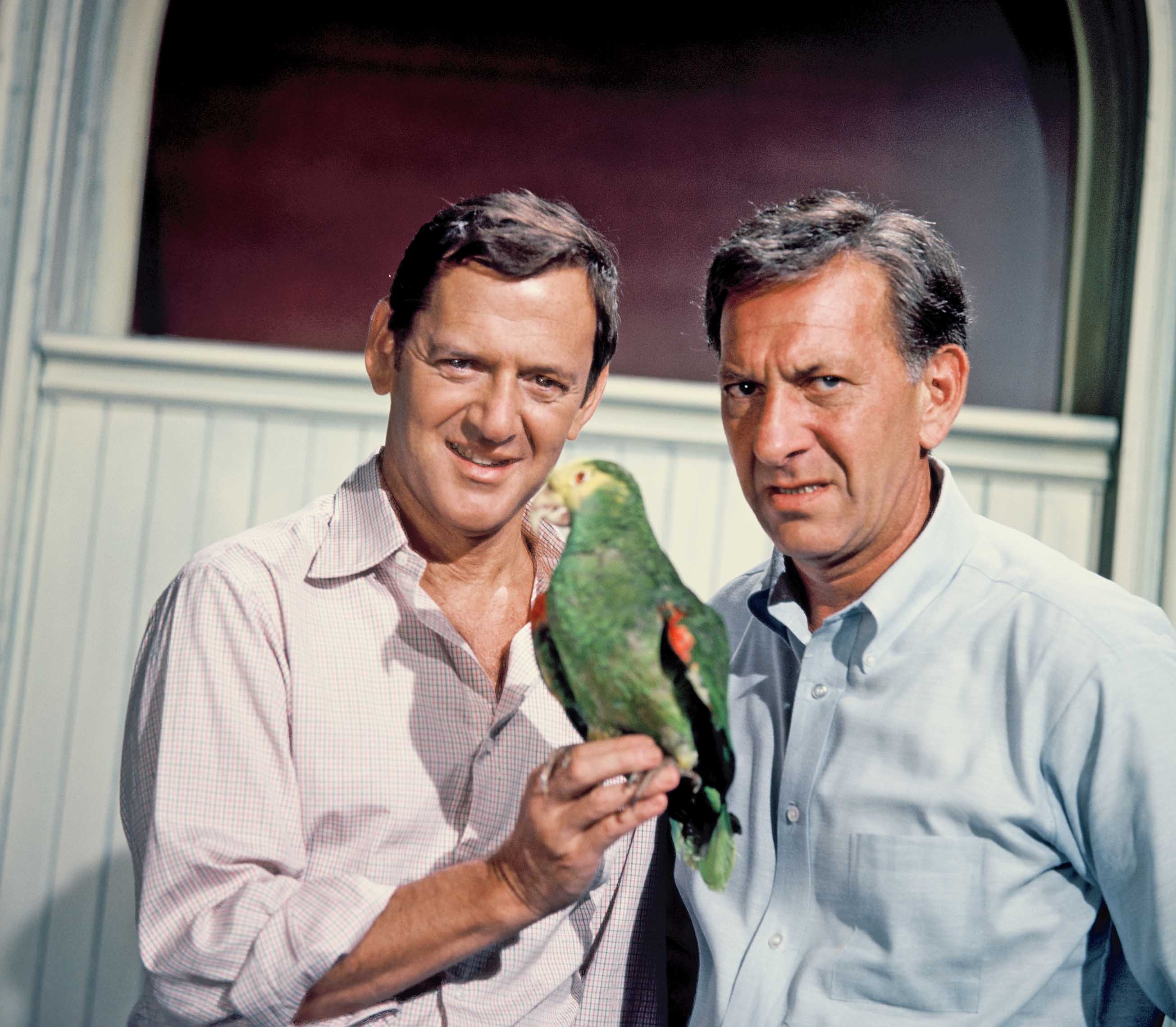The New Space Age Takes Off
From fast broadband to SOS texting, space has never been more embedded in peoples’ lives. The future is even more exciting for rockets, satellites and emerging space tech.

To help you understand the trends surrounding new technologies and what we expect to happen in the future, our highly experienced Kiplinger Letter team will keep you abreast of the latest developments and forecasts. (Get a free issue of The Kiplinger Letter or subscribe). You'll get all the latest news first by subscribing, but we will publish many (but not all) of the forecasts a few days afterward online. Here’s the latest…
With falling prices, shrinking hardware, reusable rockets and new tech, the space industry is expanding like never before. There’s rising demand from businesses, governments and consumers. “I think the space age is starting now,” said Tom Mueller, CEO and founder of space start-up Impulse and founding employee of SpaceX, at a recent space conference. Here’s an outlook for an industry teeming with activity.
SpaceX leads the way
Everyone is chasing SpaceX and its huge lead and near-monopoly status. It won’t be easy, but there’s a concerted effort to create viable alternatives to SpaceX’s reusable rockets and Starlink internet constellation. More consolidation is inevitable as satellite operators and manufacturers try to mimic SpaceX’s strategy of vertical integration. SpaceX rarely needs outside suppliers, making its own rockets, engines, satellites, antennas and more.

Sign up for Kiplinger’s Free E-Newsletters
Profit and prosper with the best of expert advice on investing, taxes, retirement, personal finance and more - straight to your e-mail.
Profit and prosper with the best of expert advice - straight to your e-mail.
Other major companies used M&A in recent years to keep pace, such as Eutelsat-OneWeb, SES-Intelsat and Viasat-Inmarsat. “We ain’t SpaceX in terms of being fully integrated,” Dan Goldberg, CEO of Telesat, recently remarked. He noted that the company has started building a lot of tech in-house as it races to catch up. Big players are absorbing suppliers, buying space start-ups and trying to acquire customers.
Heated competition will push the global space market to nearly $1 trillion in 2033, up from $600 billion in 2024, according to a report by market research firm Novaspace. The adoption of cloud computing and artificial intelligence, along with other innovations, are “creating new opportunities for commercial adoption,” says the report.
The rise of megaconstellations
Megaconstellations will lead to more disruption. Starlink’s lead is building with nearly 7,000 small satellites in low-earth orbit, beaming fast broadband service to more than 5 million customers. That includes businesses, ranging from United Airlines to Carnival Cruise Line, and consumers around the globe, especially in remote spots. Speeds are as quick as home internet, service is reliable and data delays are small. Starlink provides web service on trains in Miami, the Scottish Highlands and beyond. It connects more than 75,000 ocean vessels. Consumers are choosing it for remote lake houses, RVs or as an alternative to traditional wired broadband.
Competition spells falling data prices that entice new customers. Amazon’s Kuiper will make waves with a constellation that rivals SpaceX’s Starlink. Kuiper plans for 3,200 satellites, with service starting in 2027. Eutelsat OneWeb already has 630 satellites in orbit, focusing on business and government customers. Telesat’s Lightspeed starts service in 2027. Rivada Space Networks, Logos Space and others aim to have constellations. Globally, 70,000 new satellites are planned through 2030, according to a Goldman Sachs forecast, and China is planning to launch three-quarters of them. Though not all of these global missions will pan out.
Demand is growing for better rockets and fully revamped manufacturing. SpaceX launches 80% of all spacecraft and did 134 orbital launches last year, according to BryceTech. Next on the list was China’s space program (48) and Russia’s space program (17), followed by California-based Rocket Lab (14). Europe has Arianespace and Japan has Mitsubishi Heavy Industries. Top start-ups include Relativity Space, Firefly and Blue Origin. SpaceX aims for 170 launches this year, a bit lower than initially planned. China is ramping up, too.
In coming years, tens of millions of flat-panel antennas will need to be built. SpaceX is expanding its Bastrop, Texas facility to churn out millions of antennas per year. Amazon will have to ramp up antenna production as Kuiper service gets off the ground. Florida is also a hot spot for space manufacturing. SpaceX has shown how mass production lowers costs and shrinks the hardware. One Starlink antenna, the mini, is 12-inches by 10-inches and just 2.5 pounds. It fits in a backpack and can run on a large portable battery pack, providing speeds over 100 megabits per second.
Explosion of applications
Fast broadband from space is sparking new and fast-growing satellite applications. Wi-Fi on planes and trains can handle video calls, streaming movies and gaming. Soldiers can stay connected in war zones. Ditto, victims after natural disasters.
New antennas from Kymeta, ThinKom and others connect to satellites in multiple orbits plus land-based cell networks for resilient and secure service, which is useful for border security, intelligence agencies, emergency services and more. Agriculture is a fertile market, with John Deere using Starlink for remote diagnostics and communications on tractors, and CNH using Intelsat service on its farm equipment.
Other uses for satellites include tracking drones, fleets of trucks, ships, goods and cars. Many smartphones can tap satellite service for emergency SOS messages or to just send texts, no extra hardware needed. And don’t forget Earth observation. Capella Space, Planet Labs, BlackSky and others sell imagery for mining, insurance, agriculture, oil and gas, retail, defense, finance and other sectors.
Sovereignty in space
A growing mantra among countries across the globe: Sovereignty in space. With geopolitical tensions high, countries want more control over satellites, rather than rely on SpaceX rockets and internet service. Even the U.S. military, which has a SpaceX constellation in the works, wants more choice. Amazon’s Kuiper is a sure bet to win big Pentagon contracts, plus contracts from other countries.
It’s a big tailwind for the industry, both SpaceX and others. More nations want to adopt commercial space service and off-the-shelf hardware and software, plus launch their own large stationary satellites and small satellite constellations. The Department of Defense plans to integrate commercial space with its current tech for faster speeds and improved reliability. NATO recently started a similar project. The European Union is spending $11 billion to build its own internet constellation, using European rockets and satellites, with the aim of boosting its space autonomy. Of course, China sees its planned constellations as a way to avoid outside space tech.
Global government spending on space is set for double-digit yearly growth in coming years. $135 billion was spent by governments in 2024, a 10% increase versus 2023, according to Novaspace. The U.S. leads in government spending, with 59% of the total. More than half of the global tally is defense spending. “With the rising importance of space assets, more nations are establishing dedicated space forces” as a way to bolster defense capabilities, notes the report.
Look for more nations to try to cut red tape for the industry. In the U.S., the Federal Communications Commission is planning to streamline satellite approvals, free up spectrum and OK services, such as direct-to-device tech, at a faster clip.
Investing in space
Emerging space tech and improved services continue to excite investors. Promising start-ups keep landing funding from venture capital firms. Exciting tech includes Impulse, which is building vehicles to ferry satellites in an efficient way from low-earth orbit to higher orbits, or the moon and beyond. HiSky is building low-cost, small antennas for tractors, cars, wind turbines and more. Elve aims to make vastly cheaper millimeter-wave amplifiers, a key space component. Orbit Fab is building gas depots in space to refuel satellites and extend their lives. There are start-ups in manufacturing, ground systems, Earth imagery, software and other areas.
Despite big opportunity, many start-ups won’t pan out. Some will combine with bigger firms. Tech could fail, cash could run out or revenue not materialize. Meanwhile, there is a long list of publicly traded companies in the sector, from traditional firms such as Boeing to newly public companies such as Rocket Lab. Other public firms include Iridium, Planet Labs, Intuitive Machines and MDA Space. Kuiper is sure to intrigue space investors in Amazon. Though SpaceX has no plans to go public soon, there’s already huge interest. It has a sky-high private valuation.
We think space investments can be risky and require ample due diligence. The capital-intensive industry is notably prone to disruption, delays or failures.
Future challenges loom
Don’t overlook the headwinds for space. Start with the threat of tariffs from the U.S. and other countries, which could cause costs to rise, reduce innovation and fragment the global supply chain. Other types of protectionism include countries blocking foreign space services via regulations. There’s the inherent risk of space, shown in the recent explosion of SpaceX’s next-generation Starship rocket, which is sure to spark delays.
There are growing fears about satellite collisions, service disruptions or cyberattacks. Funding could dry up or defense spending on space could be lower than predicted. “The old axiom that ‘space is hard’ endures,” noted Iridium CEO Matt Desch in an annual report from recent years.
But those challenges hardly dim the immense promise for customers. And there are emerging solutions from advanced artificial intelligence, set to help with collision avoidance, imagery detection, bandwidth allocation, predictive maintenance and more. Amazon Cloud Services already has an AI chatbot for deciphering satellite interference.
Related Content
- Starlink's Internet Beamed From Space Is Taking Off
- SpaceX in Good Shape Despite Test Flight
- Space Stocks: How Russia Is Changing the Game
- NASA’s Moon Mission is Delayed
Get Kiplinger Today newsletter — free
Profit and prosper with the best of Kiplinger's advice on investing, taxes, retirement, personal finance and much more. Delivered daily. Enter your email in the box and click Sign Me Up.

John Miley is a Senior Associate Editor at The Kiplinger Letter. He mainly covers technology, telecom and education, but will jump on other important business topics as needed. In his role, he provides timely forecasts about emerging technologies, business trends and government regulations. He also edits stories for the weekly publication and has written and edited e-mail newsletters.
He joined Kiplinger in August 2010 as a reporter for Kiplinger's Personal Finance magazine, where he wrote stories, fact-checked articles and researched investing data. After two years at the magazine, he moved to the Letter, where he has been for the last decade. He holds a BA from Bates College and a master’s degree in magazine journalism from Northwestern University, where he specialized in business reporting. An avid runner and a former decathlete, he has written about fitness and competed in triathlons.
-
 Worried Social Security Benefits Will Be Cut? This Is How Much More You Need to Save to Be Safe
Worried Social Security Benefits Will Be Cut? This Is How Much More You Need to Save to Be SafeThe Social Security trust fund will be insolvent in 2033 and by 2035 will have to reduce benefits by 17%. Here is now much more you need to save to cover the potential shortfall.
-
 The Odd Couple: Is Renting Out a Room in Retirement for You?
The Odd Couple: Is Renting Out a Room in Retirement for You?Whether you're more Golden Girls or Felix Unger, renting out a room in retirement might make financial sense. You might even have fun.
-
 The New AI Agents Will Tackle Your To-Do List
The New AI Agents Will Tackle Your To-Do ListThe Kiplinger Letter Autonomous AI agents “see” your computer screen, then complete a task, from buying a concert ticket to organizing email. This opens up a world of possibilities.
-
 AI’s Medical Revolution
AI’s Medical RevolutionThe Kiplinger Letter Medicine is a field ripe for finding both exciting and practical uses for AI. The tech is already being used by doctors and researchers.
-
 What Are AI Agents and What Can They Do for You?
What Are AI Agents and What Can They Do for You?AI agents promise to be the next big thing in artificial intelligence, but what exactly do they do?
-
 The Economic Impact of the US-China Trade War
The Economic Impact of the US-China Trade WarThe Letter The US-China trade war will impact US consumers and business. The decoupling process could be messy.
-
 AI Heads to Washington
AI Heads to WashingtonThe Kiplinger Letter There’s big opportunity for AI tools that analyze MRIs and other medical images. But also big challenges that clinicians and companies will have to overcome.
-
 10 Major AI Companies You Should Know
10 Major AI Companies You Should KnowThese 10 AI companies are at the forefront of machine learning. Find out how they’re driving innovation and jostling to be the biggest players in the game.
-
 The AI Doctor Coming to Read Your Test Results
The AI Doctor Coming to Read Your Test ResultsThe Kiplinger Letter There’s big opportunity for AI tools that analyze CAT scans, MRIs and other medical images. But there are also big challenges that human clinicians and tech companies will have to overcome.
-
 Rising AI Demand Stokes Undersea Investments
Rising AI Demand Stokes Undersea InvestmentsThe Kiplinger Letter As demand soars for AI, there’s a need to transport huge amounts of data across oceans. Tech giants have big plans for new submarine cables, including the longest ever.